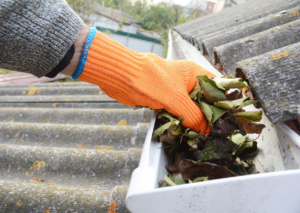Life Insurance Upstate provides a lump sum payout in the event of your death. It can help cover funeral expenses, debts, and other costs and provide a safety net for your family.
Almost anyone can purchase it. However, certain factors, including health, age, and dangerous occupations or hobbies, influence your rates.

Life insurance has numerous benefits, and it can help you secure a future for your loved ones. The death benefit payout can help them maintain their standard of living, pay off the mortgage, and cover other expenses. It can even be used to pay for children’s education so they don’t have to take out student loans. It can also provide a safety net in case you are unable to work or have a disability, which can make it difficult for you to earn a regular income.
Another use of life insurance is to cover end-of-life expenses. This may include funeral costs, casket prices, and reception expenses. This type of life insurance is often referred to as final expense coverage. In addition, it can be a good option for married couples who own property together and want to make sure their beneficiaries are financially protected in the event of one spouse’s death.
Life insurance is a great investment for any age, and it can be more affordable than you think. In addition to providing peace of mind, it offers multiple tax benefits. The premiums you pay towards a life insurance policy are eligible for deduction under Section 80C of the Income Tax Act, and the maturity benefits are also tax-free.
There are many options when it comes to purchasing life insurance, and the cost can vary depending on your age, health, policy type, and coverage amount. In order to determine which plan is right for you, consider your goals and financial situation. Also, don’t wait too long to get life insurance – the cost will increase as you age. If you’re unsure about which type of life insurance is best for you, consult with a certified financial planner to make the most informed decision.
Costs
Life insurance costs can vary greatly, and the type of policy you choose will impact your premium. Generally speaking, the higher the coverage amount and the more benefits you opt for, the higher the premium will be. A financial professional can help you determine the coverage you need and find a policy that fits your budget.
The cost of life insurance depends on a variety of factors, including your age, gender, and health. The younger and healthier you are, the lower your life insurance rates will be. Additionally, the type of life insurance you choose will also affect the price, with term life policies being less expensive than permanent life insurance. Depending on your needs, you may also want to consider a cash value account, which builds up over time and can be used for loans or withdrawals.
When determining how much coverage you need, think about your current and future financial obligations and resources. This can include debts like your mortgage, child-related expenses like tuition, and other living expenses. In addition, take into account the effects of inflation, as a $250,000 death benefit today may not go as far as it would 10 or 20 years from now.
In addition to the death benefit, life insurance policies can include other benefits, such as accidental death and dismemberment coverage. These riders typically come with a separate premium, and are usually not included in the initial quote for your policy. You should read the fine print carefully to ensure you understand all of the terms and conditions of your policy. In addition, you should check with your state insurance regulator to see if there are any complaints against the insurer.
Term life
Term life insurance is the most popular type of policy, and it’s also one of the most budget-friendly. It offers coverage for a set period, typically 10, 20, or 30 years. During this time, your beneficiaries will receive a cash benefit when you die. This money can help your loved ones pay for things like funeral costs, mortgages, and other debts. The death benefit is tax-free.
Term policies are generally easy to understand and require less paperwork than whole life insurance. Some even offer temporary insurance coverage while your application is processed. You can ask your agent for details. During the process, you’ll likely undergo a medical exam to assess your health. The results will determine your rate and coverage options. Certain lifestyle habits and occupations may increase your rates, such as scuba diving or dangerous occupational environments.
A term life policy can be customized to meet your needs by choosing the length of the coverage and deciding who will get the death benefits. Beneficiaries can be your spouse, children, or other relatives, as well as a charity or business. If you choose to give away the death benefit, you can change beneficiaries later on if your circumstances or preferences change.
Ultimately, the type of policy you choose depends on your personal and financial goals. It’s important to weigh all your options and consult a financial advisor before making a decision. Whether you choose term or whole life, most financial advisers agree that it’s smart to have life insurance in place. Term life is the most budget-friendly option, but whole life may be worth considering if you’re looking for a more permanent solution with an investment component.
Whole life
Whole life insurance is an investment option for those who need a guaranteed death benefit in exchange for level, regular premium payments. It also provides a savings component that accumulates cash value over time, which the policyholder can borrow against or draw on in the future. However, withdrawals and outstanding loan balances will reduce the death benefit.
A financial professional can help you choose the right policy for your needs. They will ask questions to understand your financial goals and objectives, then provide recommendations to help you reach them. They may also work with you over time through periodic reviews to ensure your strategy remains relevant and meets your changing needs.
While whole life insurance costs more than term life, it offers many benefits that make it worth the extra cost. Unlike term life, whole life insurance will cover you for your entire lifetime. It can also be a good way to offset the loss of a key employee or partner, as it can cover their share of the business.
The majority of a whole life insurance premium goes toward the death benefit and the remainder is invested in a savings account that earns a rate of return. This savings portion of the policy can build up over the years, and it can be accessed through tax-favorable withdrawals during the insured’s lifetime.
Investing in a whole life insurance policy is a great way to protect your family from unexpected expenses and debt. Whether you want to invest in your children’s education or leave behind a legacy, whole life insurance can be a valuable asset for anyone. However, before you buy a whole life insurance policy, make sure to find out the company’s financial strength rating. This is important because a strong company has a greater chance of being around decades from now to pay claims.
Variable life
A variable universal life insurance policy (VUL) offers a flexible premium payment and the option to invest your cash value in a variety of investment options. These investments can be in stocks, bonds and mutual funds. This gives you market exposure that other life insurance policies don’t offer. However, this can also increase your risks as well as your return potential. The premiums for a VUL are typically higher than other types of life insurance and you’ll often have to pay management fees for your investments. In addition, your returns are capped compared to other investments outside of your life insurance.
This type of life insurance is ideal for people who want the flexibility of a life insurance policy with the added investment component. It’s especially good for investors who have already maximized their contributions to traditional tax-advantaged accounts and are looking to diversify their portfolio. People who buy a variable life insurance policy should carefully review the prospectus, which contains important information about fees, expenses and investment options.
Many variable life insurance policies come with a no-lapse guarantee, meaning that as long as you pay the minimum amount required, your death benefit will be paid to your beneficiaries. However, if you make policy loans or withdrawals, your cash values may fall below the minimum required to cover fees and charges. This could cause your policy to lapse.
The main advantage of a variable life insurance policy is its investment component, which allows you to select individual investments and customize your plan to suit your financial goals. This can give you the opportunity to earn a better return than other life insurance policies, but you should carefully consider the risks.





